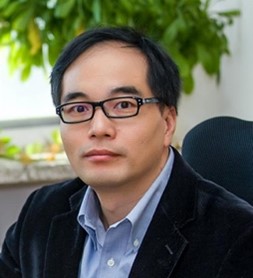Jun-Wei Luo
Si-based Nanostructures
Institute of Semiconductors, Chinese Academy of Sciences
A35 Qinghua East Road, Haidian District, Beijing 100083, China
Email: jwluo@semi.ac.cn
Biography
Jun-Wei Luo is the professor at the Institute of Semiconductors, Chinese Academy of Sciences (CAS). Before moving to China in 2014, he appointed as a Senior Scientist at the U.S. Department of Energy's (DOE's) National Renewable Energy Laboratory (NREL). He earned the CAREER award--- the National Science Fund for Distinguished Young Scholars in 2019. He is interested in semiconductor physics and has made has made fundamental and systematic innovation achievements, such as (1) discovered the hidden spin polarization in silicon, and other centrosymmetric crystals, which was published in nature physics in 2014 and highlighted by news & views in the same issue as "... will certainly lead to some changes in the next editions of textbooks ..."; (2) unraveled the emergent linear Rashba effect in holes of semiconductor one-dimensional quantum wires and two-dimensional quantum wells in sharp contrast to the common thought of cubic-k as the lowest order of Rashba effect; (3) proposed a unified theory to explain the formation of direct or indirect bandgap in semiconductors to solve the long-standing puzzle of the indirect bandgap limitations in light emission from silicon; (4) ruled out the silicon quantum dots as a candidate of the silicon-based light emitter; (5) inversely designed Si/Ge superlattices with a 50-fold enhancement in light emission; and (6) recently proposed doping-induced tensile strain to make germanium direct bandgap as a new concept of CMOS-compatible light-emitter. This new silicon-based light-emitting concept was considered the original innovation funded by the Chinese special district of Defense Innovation and awarded the CAS Project for Young Scientists in Basic Research ($3 million). He has published more than 90 peer-reviewed papers, including one in nature physics, one in nature nanotechnology and one in nature communications, and 6 in PRL as the first or corresponding author.
Abstract for Presentation
Theoretical design Ge/Si quantum wells towards Ge hole spin qubits
The electric dipole spin resonance (EDSR) combining strong spin-orbit coupling (SOC) and electric-dipole transitions facilitates fast spin control in a scalable way, which is the critical aspect of the rapid progress made recently in germanium (Ge) hole-spin qubits. After demonstrating the all-electrical manipulation of a single hole-spin qubit in gate-defined planar quantum dots (QDs) in Ge quantum wells (QWs) in 2018, remarkably rapid progress has been made in increasing the number of coupled qubits—doubled every year. Sixteen coupled qubits had recently been reported in 2022 APS March meeting by Prof. M. Veldhorst and his co-workers at Delft. However, a puzzle is raised because centrosymmetric Ge lacks the Dresselhaus SOC, a key element in the initial proposal of the hole-based EDSR. Here, we report that, contrary to conventional wisdom, we had uncovered a strong and tunable k-linear Rashba SOC in 2DHGs of semiconductor QWs by performing atomistic pseudopotential calculations in conjunction with theoretical analysis based on the effective model Hamiltonian approach. We illustrate that this emergent k-linear Rashba SOC is a first-order direct Rashba effect, originating from a combination of heavy-hole-light-hole mixing and direct dipolar coupling to the external electric field. We then demonstrated that our discovered finite k-linear Rashba SOC of 2D holes offers fast hole-spin control via EDSR with Rabi frequencies in excellent agreement with experimental results over a wide range of driving fields. We also find that the sharp interface is necessary, otherwise random alloy will remarkably suppress this linear Rashba SOC. We further demonstrate a factor of 5 times enhancement on the linear Rashba SOC through engineering the interface potential by varying Si/Ge stacking. These findings bring a deeper understanding for hole-spin qubit manipulation and offer design principles to boost the gate speed.
References
[1] Y. Liu, J.X. Xiong, Z. Wang, W.L. Ma, S. Guan*, J.W. Luo*, and S.S. Li, PHYSICAL REVIEW B 105 (2022) 075313.
[2] J.X. Xiong, S. Guan*, J.W. Luo*, and S.S. Li, PHYSICAL REVIEW B 103 (2021) 085309.
WELCOME TO CHINA TO ATTEND THE ICANS
23-26 August, Nanjing, China
Connect with us:



